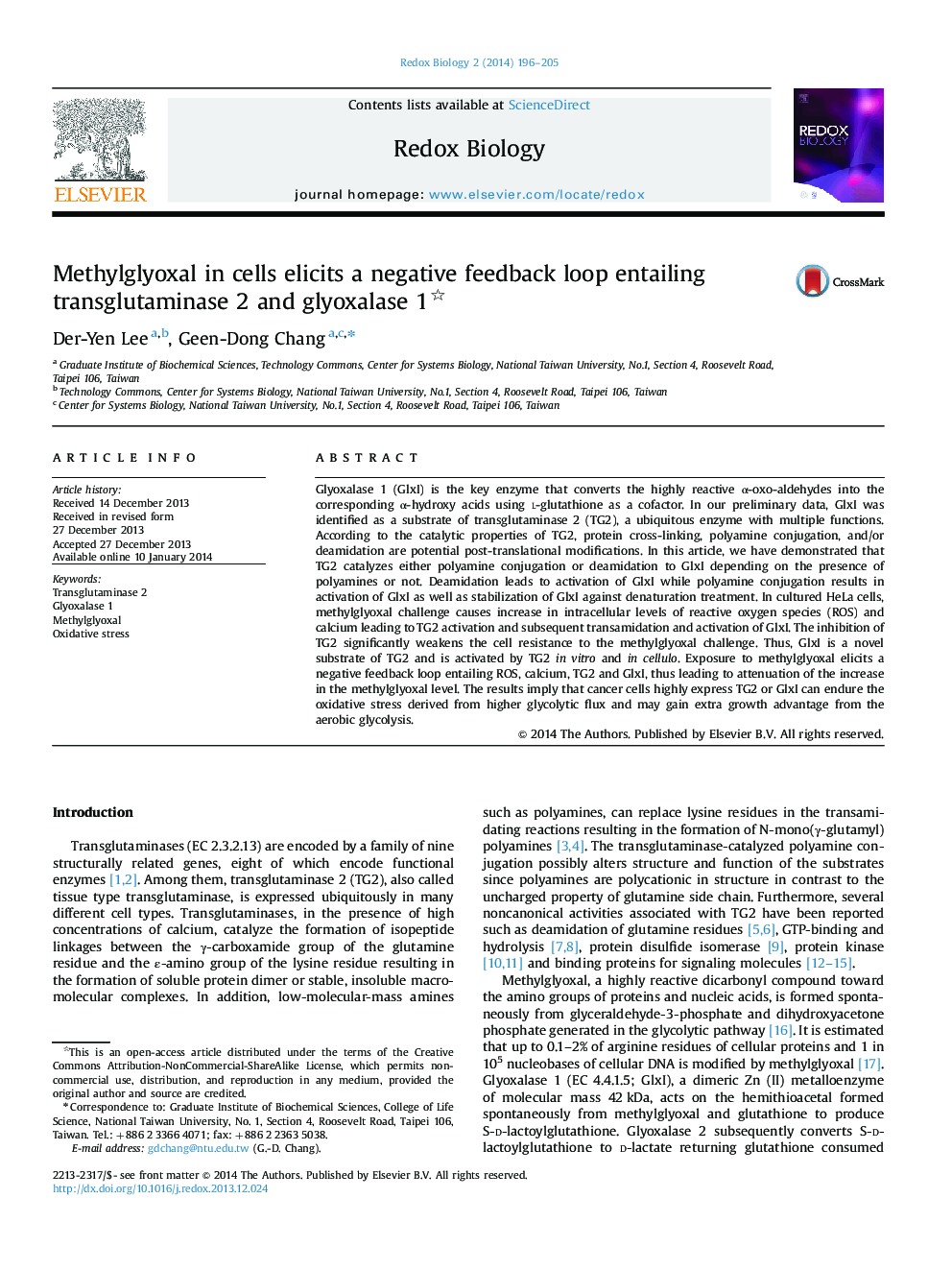| Article ID | Journal | Published Year | Pages | File Type |
|---|---|---|---|---|
| 1923015 | Redox Biology | 2014 | 10 Pages |
•We have demonstrated novel modifications of glyoxalase I by transglutaminase 2.•The modifications mediated by transglutaminse 2 modulate the glyoxalase I activities.•Methylglyoxal treatment in cells induces increases in the levels of endogenous reactive oxygen species and activation transglutaminase 2 and glyoxalase I.•Cells dispose the accumulated intracellular methylglyoxal by a negative feedback loop consisting of reactive oxygen species, calcium, transglutaminase 2 and glyoxalase I.
Glyoxalase 1 (GlxI) is the key enzyme that converts the highly reactive α-oxo-aldehydes into the corresponding α-hydroxy acids using l-glutathione as a cofactor. In our preliminary data, GlxI was identified as a substrate of transglutaminase 2 (TG2), a ubiquitous enzyme with multiple functions. According to the catalytic properties of TG2, protein cross-linking, polyamine conjugation, and/or deamidation are potential post-translational modifications. In this article, we have demonstrated that TG2 catalyzes either polyamine conjugation or deamidation to GlxI depending on the presence of polyamines or not. Deamidation leads to activation of GlxI while polyamine conjugation results in activation of GlxI as well as stabilization of GlxI against denaturation treatment. In cultured HeLa cells, methylglyoxal challenge causes increase in intracellular levels of reactive oxygen species (ROS) and calcium leading to TG2 activation and subsequent transamidation and activation of GlxI. The inhibition of TG2 significantly weakens the cell resistance to the methylglyoxal challenge. Thus, GlxI is a novel substrate of TG2 and is activated by TG2 in vitro and in cellulo. Exposure to methylglyoxal elicits a negative feedback loop entailing ROS, calcium, TG2 and GlxI, thus leading to attenuation of the increase in the methylglyoxal level. The results imply that cancer cells highly express TG2 or GlxI can endure the oxidative stress derived from higher glycolytic flux and may gain extra growth advantage from the aerobic glycolysis.
Graphical abstractFigure optionsDownload full-size imageDownload as PowerPoint slide
